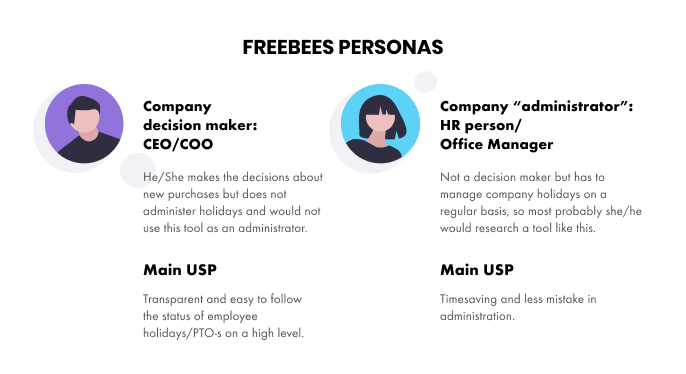Whether you’re launching a new product or adding a new service to your company’s portfolio, market research can be very valuable. This process is particularly important for startups as it allows them to determine if there is a market for their proposed products to begin with and tweak their business plan accordingly.
As a rule, market research for startups should provide answers to some key questions about your business. These include the size of your target market and its growth potential, your customers’ needs and financial circumstances, as well as the strengths and weaknesses of your competitors.
The information you gather from the market research will give you insight into the needs and wants of your potential customers. Develop new business ideas that will help you fill these needs and grow your business as a result.
Here are the steps you need to take to conduct effective market research.
1. Identify Problems and Opportunities
As soon as you set out to conduct market research, you need to identify the problems that the research aims to solve and/or the opportunities that you want to seize. To do this, you can employ one of the following methods:
- Primary Research: The use of online surveys, focus groups, and interviews to collect firsthand information about the market and your customers.
- Secondary Research: Analyzing public records, market statistics, and sales data to draw conclusions about your customers and the state of the market.
If the goal of your market research is to compare your performance to the overall industry standard, benchmarking can provide you with the information you need.
For more comprehensive results, you can use the SWOT (Strength, Weaknesses, Opportunities, Threats) method. This technique helps to identify the effects of internal and external factors on your company, which you can use to improve your business strategy.
2. Define Your Target Group and Create a Persona
After you have identified the tasks of your research campaign, you need to determine your marketing persona. This term denotes the key segment of your audience that you want to be the focus of your research.
Your persona should be a composite sketch of sorts that takes into account the socio-demographic characteristics of your preferred target audience members. It should also reflect their interests, financial circumstances, as well as their needs and habits that are closely related to the services and products you offer.
Here’s a snippet of the personas from our holiday management app, Freebees.io:

To properly identify your target group, you need to look closely at your website statistics. You should also monitor your Twitter and Facebook analytics to get a deeper insight into your followers’ demographics, habits, and interests.
3. Look at Your Competitors
Effective market research doesn’t focus solely on your customers but your competitors, too.
As the name suggests, competitor analysis gives you insight into the activities of your competitors. This allows you to identify the strengths and weaknesses of your competitors and compare them to your own. You can use your findings to develop strategies that will help you maintain your current position in the market and/or gain an advantage over your competitors.
To conduct comprehensive competitor analysis, you will first need to identify your top competitors and focus solely on them. After that, look at all publicly available information on these competitors to identify and analyze their successes and failures.
Looking at your findings, identify the key areas where you can improve your own business plan. Try to anticipate your top competitors’ future activities and come up with strategies to prevent them from jeopardizing your market position.
4. Set Up Your Research Plan
With these three stages out of the way, it is time to set up your research plan. As with any other research project, you should start by defining your goal (e.g. launching a new product) and objectives (e.g. identifying what your customers look for when buying a product).
Since you’ve already identified your target group, you now need to define your research instruments. For example, you can set up an online survey on SurveyMonkey or use A/B testing. Now determine your sample size (i.e. the number of submissions you need to get valid results) and start collecting data.
5. Examine the Results
After you have gathered all the quantitative (age, location, income, etc.) and qualitative (the needs, values, and beliefs of your customers) data, you will have to analyze it to draw conclusions.
The quantitative data will include lots of predefined values that you’ll need to organize using common statistical methods like multiple regression, factor analysis, and cluster analysis. Things could prove a bit trickier with qualitative data as it will most likely involve plenty of text. However, you can use content analysis and create charts and graphs to make that data easier to process.
While analyzing the data that you have collected, you shouldn’t focus on individual pieces of information that stand out from the rest. Instead, you need to examine your sample as a whole and look for trends and patterns that you can turn into actionable steps and incorporate into your business strategy.
6. Take Action
If the results of your market research have successfully proven the validity of your business ideas and strategies, your work here is done. But if your market research efforts were about more than just validation, it is now time to take action.
Now that you have a better understanding of your customers, their needs, finances, and demographic characteristics, you can use this information to develop new products and services, modify your pricing structure, or shape your future marketing campaigns to better cater to your target audience.
Combine the research data with information from other sources to gain a broader perspective of the current state of the market and your position in it. You can also use this information to update your persona for future research.
Summary: Step-by-Step Market Research for Startups
Market research for startups usually comprises a few key stages:
- Identifying problems, opportunities, and goals
- Defining your target group and your customer persona
- Creating your market research plan with clearly defined objectives and instruments
- Collecting, analyzing, and implementing data gathered from your market research
Startups and small businesses can benefit greatly from conducting market research. For one, this method allows them to get a better idea of who their customers are and helps them identify potential new customers that they should target in the future.
If you’re a business owner, you can use the results of market research to solve some major challenges, develop new strategies, as well as to set realistic and achievable goals for your company. Market research also allows you to explore new opportunities to establish a stronger presence in the market and grow your business as a result.







Have a look at our social media